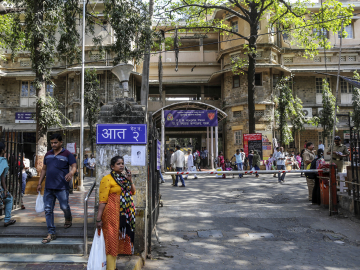Rethinking Skin Cancer: It’s Time to Double Down on Prevention
Each May, as we observe Skin Cancer Awareness Month, we are reminded of an urgent truth: Skin cancer is one of the most common cancers globally, with millions of new cases diagnosed each year across regions, climates, and skin tones.
Globally, skin cancer was diagnosed in more than 1.5 million people in 2020 alone, according to the WHO.
Health care professionals continue to encounter advanced-stage skin cancers that could have been prevented or detected earlier. The cost—both personal and financial—is staggering. But what if we focused more on keeping skin cancer out of the hospitals altogether? What if our best weapon against this growing crisis is public health?
As a dermatology-trained clinician with more than a decade of experience in skin cancers, I’ve witnessed firsthand the burden of late-stage skin cancers and the missed opportunities for early intervention. One patient—a farmer from a high-altitude region in Kashmir—came in complaining of a persistent itch on his back. During examination, I immediately noticed a basal cell carcinoma on his nose. When I pointed it out, he casually dismissed it, saying it had been there for years and that his brother had something similar. This kind of normalization of skin lesions due to lack of awareness is all too common.
We must ask: Why are we still waiting for skin cancers to arrive at the hospital doors, instead of preventing them?
A shift in strategy is long overdue. The global health community must view skin cancer with the same urgency and innovation that we apply to other preventable diseases. This means elevating prevention and education to the same level as treatment.
We need earlier education on sun protection, especially in schools and among children who face a cumulative lifetime risk. Education efforts like the EPA’s SunWise Program have led to better sun protection habits. Governments and health systems should integrate sun-safe environments—such as shaded playgrounds, school policies around sun exposure, and public infrastructure changes—into national strategies. Research must further explore the impact of early-life UV exposure, particularly in high-risk locations such as high-altitude environments, and occupational settings such as agriculture.
More inclusive representation in prevention and research efforts is also essential. People of color are often underrepresented in skin cancer awareness, research, and clinical guidelines—which rarely include specific recommendations tailored to their unique risk profiles. While their relative risk for some skin cancers may be lower, outcomes tend to be worse due to later diagnoses and a lack of culturally tailored education. We cannot afford to overlook these disparities.
Technology presents an exciting path forward. Innovations like DermaSensor—an AI-powered tool that helps primary care providers identify cancerous lesions—are extending dermatologic expertise beyond specialty clinics and into frontline care settings, enabling earlier screening. Teledermatology is bridging gaps in access across remote regions and underserved populations.
But technology alone cannot replace the foundational work of community-based awareness and screening efforts, and research. We need more population-based studies, greater translation of clinical advances into public health practice, and funding mechanisms that support prevention rather than only treatment.
Skin cancer is often preventable—and we must embrace that opportunity. Australia’s “Slip-Slop-Slap” campaign, for example, has shown that consistent, clear messaging can lead to long-term behavioral change and even reduce melanoma rates. Through early education, access to tools, inclusive research, and proactive community strategies, we can change the current trajectory.
Let’s stop waiting for skin cancers to reach our operating rooms—and start preventing them from even happening.
Shafat Hassan, MD, PhD, MPH, is a dermatologist, skin cancer expert, and public health advocate focused on skin cancer prevention, health equity, and policy innovation. He is associate director of Medical and Scientific Affairs at Hitech Analytical & Diagnostic Solutions in Gaithersburg, Maryland, and leads the Hand Hygiene Triad Project at the Johns Hopkins Bloomberg School of Public Health.
Join the 50,000+ subscribers in 170+ countries who rely on Global Health NOW summaries and exclusive articles for the latest public health news. Sign up for our free weekday newsletter, and please share the link with friends and colleagues.
Colorful beach umbrellas seen from above at Cinque Terre, Monterosso al Mare, Italy. November 26, 2018. Alev Takil, Unsplash




